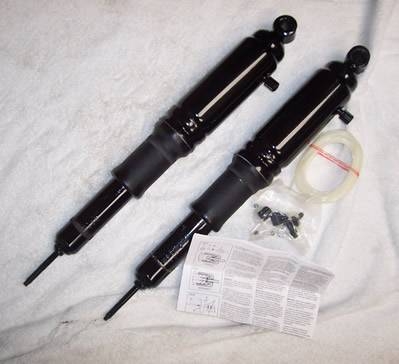
Air shocks are a popular aftermarket upgrade for trucks and SUVs. They provide additional support when towing and balancing for heavy loads. The basic design is similar to a gas-powered shock absorber, but it has a pneumatic line and internal bag that can be inflated with air. Over time, this bag can wear out and leak air. The average backyard mechanic can complete this task in less than an hour.
Deflate the existing air shocks by pressing on the valve stem for each shock. They should not have any air in them during removal.
Trace the air lines to each shock, and note where any kinks or bends might be in the lines. If they are mounted deep into the body of the truck and do not appear to be damaged, then they can be reused. If they are mounted in easy-to-reach areas or are damaged, they should be replaced with new pneumatic lines and valve stems. Almost all air shock lines will have screw adapters and rubber gaskets, allowing the removal of one section or part.
Disconnect the shocks from the air lines. There is a large screw adapter on the side of the shock that will pull free once unscrewed.
Unbolt the shock absorber from the bottom mount first, then the top mount. The top mount may be like the bottom, a bolt on an eyelet; some models of trucks have two screws holding in a shock absorber plate on the top mount. Once unbolted, dislodge the bottom eyelet until it slides off the mount bolt. The top should follow suit, and the shock will be freed.
Replace the air shock. Mount the top bolts first, then slide the shock onto the eyelet on bottom. Tighten the top mounts before cutting the zip tie holding the shock in a compressed state, then press the shock onto the bottom bolt as it decompresses. It does so relatively slowly, but might take considerable effort to recompress if this step is missed.
Reconnect the air lines at the individual shocks, with new gaskets. Usually there are two rubber gaskets inside each screw, and they can be replaced if the line is pressed out of the screw momentarily. They come dry, but can be moistened with a small amount of nonsolvent lubricant, then reinserted onto the line and into the screw.
Reinflate the system at the valve stems, and check with a tire gauge to ensure proper pressure. The typical air shock will work best under load at 40 to 70 psi, while they can be inflated safely as high as 140 psi for special circumstances. It is not recommended to inflate them past 150 psi or to use them under pressure at 20 psi or lower.